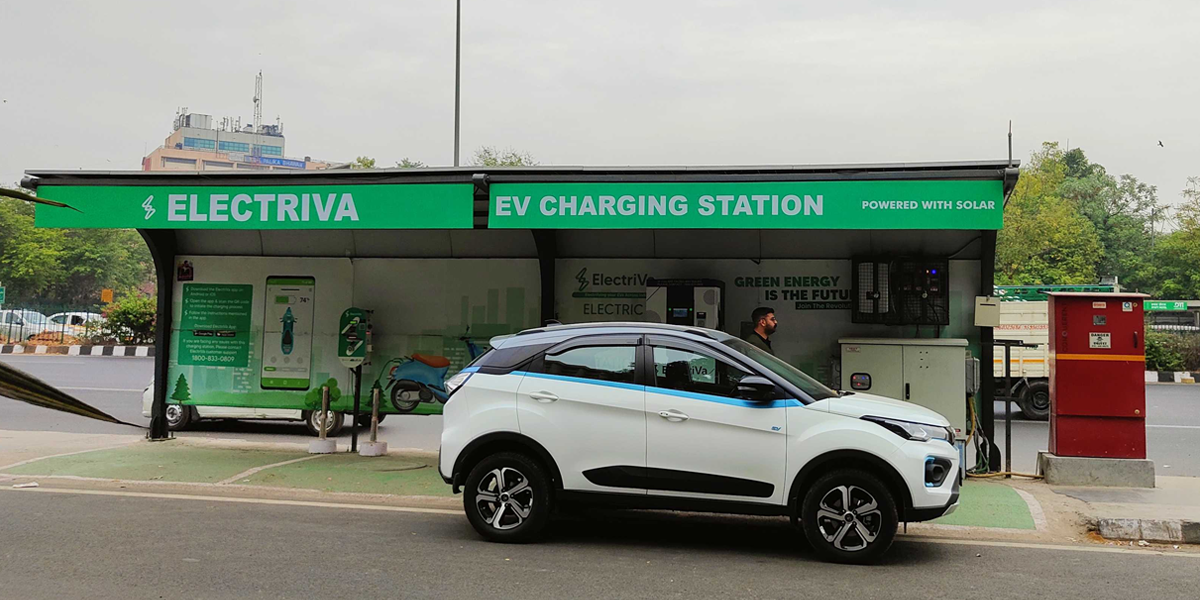Easy of access is key to ensuring consumer satisfaction
With the Indian EV market predicted to grow to 5 crore units by 2030, charging points will play a critical role in the sector’s expansion. Exactly as ready access to petrol pumps has been instrumental in popularising the ICE vehicles in the past, easily available EV charging points are a prerequisite to countering range anxiety.
Siting EV chargers correctly
Two key differences between ICE vehicles and EVs is that the latter can be “re-fuelled” at home as well, and the power output of EV chargers can vary greatly, depending upon how fast the vehicle must be charged. Selecting the correct site for a charger thus depends on:
- Density of traffic : High traffic routes within and outside urban centres are ideal for siting charging points. Similar to petrol pumps, a point along common commuting routes or busy roads is where most EVs would stop to recharge. This is also reflected in the Ministry of Power’s Dec 2021 directive that charging points should be installed at 22,000 of India’s 70,000 petrol pumps along major roads and highways.
- Locations where vehicles congregate like parking lots, malls etc. : Most private cars and two-wheelers, regardless of the fuel, sit idle for around 90% of the day at homes, shopping strips, office complexes, malls, hospitals, factories etc. Therefore, it makes sense for charging points to be installed at these locations for immediate access (fig. 1).
 Fig. 1: Solar-powered EV chargers outside a shopping strip in Germany | Stanford.edu
Fig. 1: Solar-powered EV chargers outside a shopping strip in Germany | Stanford.eduFor EVs used by businesses (taxis, last-mile delivery etc.), while charging during the day would cause downtime that is detrimental to the company’s profit margins, a charging assembly at the businesses’ primary offices or warehouses for use after operational hours is the ideal location. This is similar to the charging points installed by the Delhi government at seven bus depots for the city’s electric bus fleet.
- Choosing locations for fast and slow chargers : EV chargers fall into two broad categories: slow and fast. It refers to their power output and the time they need to recharge a battery pack. Most manufacturers recommended that EVs be recharged slowly, typically overnight (8-10 hours) at a low voltage of 120V. This is to prolong battery life as regular charging at high voltages, such as Tesla’s 480V+ (fast charging) is known to degrade the batteries much faster. It is only recommended for when the user absolutely needs to top up quickly.
 Fig. 2: Tesla Superchargers offer 480V+ fast charging for rapid top-ups | Medium
Fig. 2: Tesla Superchargers offer 480V+ fast charging for rapid top-ups | Medium This implies that slow/conventional charging points are better suited to be used at homes, residential complexes and office parking lots, while fast chargers would be useful at high traffic locations for quick recharges. They would also prevent a buildup of vehicles at these busy sites.
- Source and quality of power : India is fortunate to be blessed with abundant solar energy (an average insolation of 4-7 kWh/m2/day), which makes it much easier for charging complexes to be set up at large parking lots or residential complexes that have the space for captive solar systems. However, even for locations that do not have strong insolation, and for night-time use, access to uninterrupted power is important to ensure round-the-clock charging. Charging stations with fast chargers will especially need high quality power at all times, as even minute voltage fluctuations and power outages mid-charging can damage batteries.
- Space for future expansion : Charging stations will become ubiquitous as EVs expand their market share. And especially with India’s propensity for two-wheelers — they account for ~85% of all vehicles sold in the country — designing charging hubs to factor in large vehicle numbers means that charging sites must have adequate space for expansion. This is not just to accommodate more EVs — electric 2Ws, auto rickshaws, e-rickshaws, cars, delivery vans and tempos — but also to install more transformers, power junctions, ducts and cables with adequate spacing amongst them to meet safety standards.
There have already been a number of studies conducted on installing EV chargers in India, such as the one by WRI (World Resources Institute) and RMI (Rocky Mountain Institute), and the Ministry of Power has declared that a charger must be present across every 3km x 3km grid in the cities. Most importantly, however, it is essential for installers to coordinate with the DISCOMS as quality power supplies are indispensable for charging stations. It could be an additional source of revenue for the latter and could sustain their businesses to a large extent as the market moves strongly towards e-mobility.


